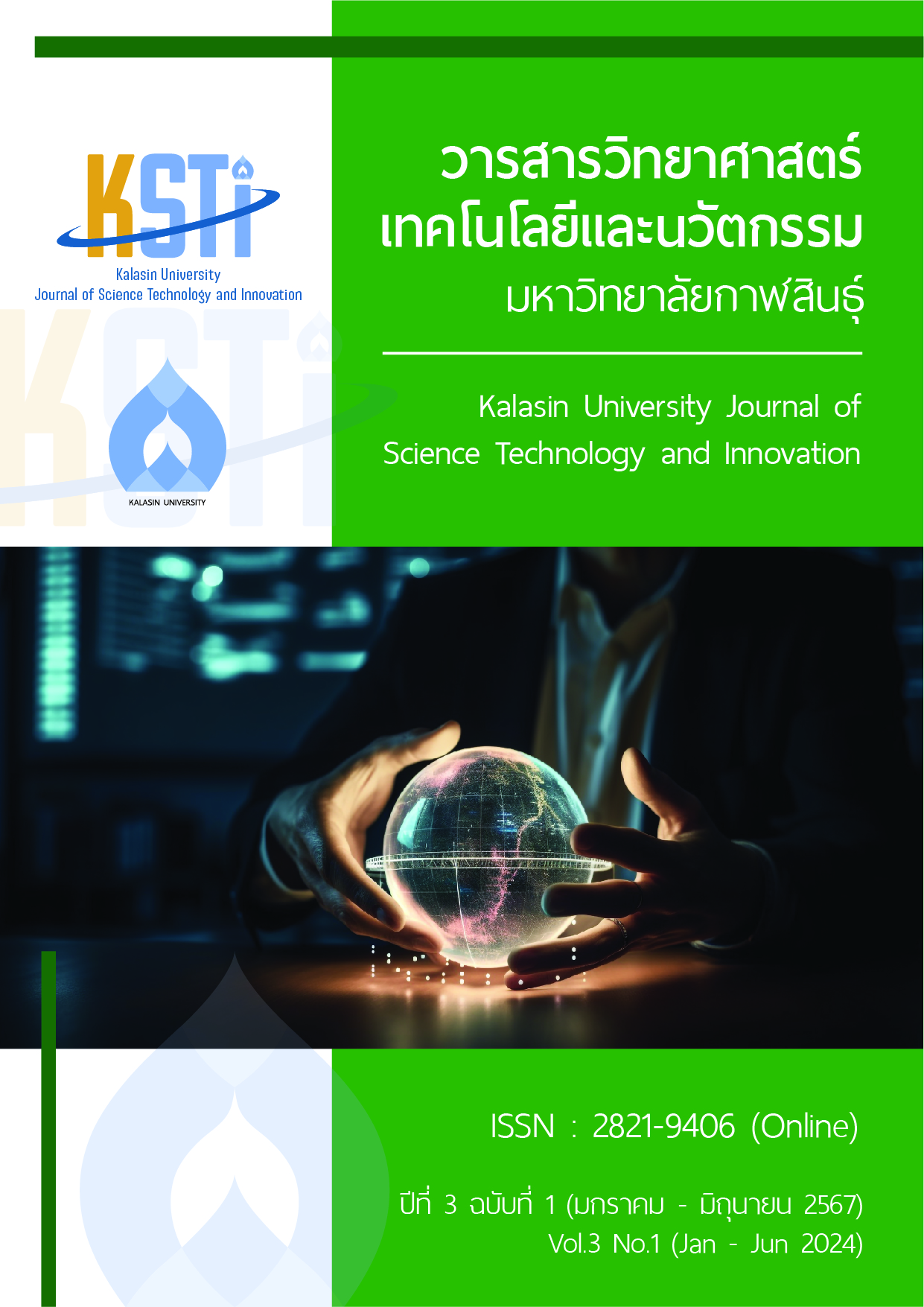การเปลี่ยนแปลงตามฤดูกาลและพื้นที่ของความหนาแน่นของการเกิดฟ้าผ่าและกระแสไฟฟ้า สูงสุดของลำฟ้าผ่าที่เกิดขึ้นในประเทศไทย
Main Article Content
บทคัดย่อ
ฟ้าผ่าทั้งแบบ Negative Cloud to Ground หรือ -CG และ Positive Cloud to Ground หรือ +CG ทั้งหมด 67,921 ครั้ง ที่เกิดในประเทศไทยในช่วงเดือนมกราคม ปี พ.ศ. 2560 ถึง เดือนธันวาคม ปี พ.ศ. 2562 ที่ได้มาจากเครือข่ายตรวจจับฟ้าผ่า World Wide Lightning Location Network หรือ WWLLN ได้ถูกนำมาวิเคราะห์เพื่อศึกษาการเปลี่ยนแปลงตามฤดูกาลและพื้นที่ของความหนาแน่นของการเกิดฟ้าผ่าและกระแสไฟฟ้าสูงสุดของลำฟ้าผ่าที่เกิดขึ้นในประเทศไทย จากการวิเคราะห์ข้อมูลพบว่าบริเวณที่เกิดฟ้าผ่าสูงที่สุด คือภาคตะวันออกของประเทศไทย ซึ่งมีความหนาแน่นของการเกิดฟ้าผ่าอยู่ที่ 50 ครั้งต่อตารางกิโลเมตรต่อปี ส่วนบริเวณที่เกิดฟ้าผ่าน้อยที่สุดจะอยู่บริเวณภาคเหนือตอนบนซึ่งความหนาแน่นของการเกิดฟ้าผ่าน้อยกว่า 5 ครั้งต่อตารางกิโลเมตรต่อปี และเมื่อพิจารณาการเกิดฟ้าผ่าในแต่ละช่วงของปีพบว่าฟ้าผ่าเกิดขึ้นมากที่สุดในประเทศไทยระหว่างช่วงเดือนมีนาคมถึงเดือนพฤษภาคม ซึ่งในช่วงดังกล่าวจะมีฟ้าผ่าเกิดขึ้น 1.2 ครั้ง ทุก ๆ หนึ่งนาที ส่วนค่ากระแสไฟฟ้าสูงสุดของลำฟ้าผ่ามีค่าตั้งแต่ 10kA ถึง 150 kA โดยค่าเฉลี่ยของกระแสไฟฟ้าสูงสุดของลำฟ้าผ่าทั่วประเทศไทยมีค่าเท่ากับ 61.1 kA
Downloads
Article Details

อนุญาตภายใต้เงื่อนไข Creative Commons Attribution-NonCommercial-NoDerivatives 4.0 International License.
เจ้าของลิขสิทธิ์ (สถาบันวิจัยและพัฒนา มหาวิทยาลัยกาฬสินธุ์) ผู้เขียน ตกลงว่าการทำสำเนาบทความหรือส่วนใดส่วนหนึ่งของบทความดังกล่าวในรูปแบบสิ่งพิมพ์หรืออิเล็กทรอนิกส์ตามที่ได้รับอนุญาต จะต้องระบุประกาศลิขสิทธิ์ตามที่กำหนดไว้ในวารสาร พร้อมทั้งอ้างอิงข้อมูลฉบับสมบูรณ์ของบทความที่ตีพิมพ์ในวารสารที่จัดทำโดย สถาบันวิจัยและพัฒนา มหาวิทยาลัยกาฬสินธุ์ อย่างครบถ้วนทุกครั้ง
เอกสารอ้างอิง
Christian H, Blakeslee R, Boccippio D, Boeck W, Buechler D, Driscoll K, et al. Global frequency and distribution of lightning as observed from space by the optical transient detector. 2003; Journal of Geophysical Research. 108(1): 4-15. doi:10.1029/2002JD002347.
Sato M, Fukunishi H, Kikuchi M, Yamagishi H, Lyons W. Validation of sprite-inducing cloud-to-ground lightning based on elf observations at syowa station in antarctica. 2003; Journal of Atmospheric and Solar-Terrestrial Physics. 65(5): 607–614. doi:10.1016/S1364-6826(02)00327-9.
Bandholnopparat K, Sato M, Adachi T, Ushio T, Takahashi Y. Estimation of the IC to CG ratio using JEM-GLIMS and ground-based lightning network data. 2020; Journal of Geophysical Research: Atmospheres, 125(23): 1-14. doi:10.1029/2019JD032195.
Rycroft M, Israelsson S, Price C. The global atmospheric electric circuit, solar activity and climate change. 2000; Journal of Atmospheric and Solar-Terrestrial Physics. 62(17): 1563–1576. doi:10.1016/S13646826(00)00112-7.
Rycroft M, Odzimek A, Arnold N, Füllekrug M, Kulak A, Neubert T. New model simulations of the global atmospheric electric circuit driven by thunderstorms and electrified shower clouds: The roles of lightning and sprites. 2007; Journal of Atmospheric and Solar-terrestrial Physics. 69(17): 2485–2509. doi:10.1016/j.jastp.2007.09.004.
Williams E, Boldi B, Matlin A, Weber M, Hodanish S, Sharp D, et al. The behavior of total lightning activity in severe florida thunderstorms. 1999; Atmospheric Research, 51(34): 245-265. doi:265.10.1016/S01698095(99)00011-3.
Rakov V, Uman M, Raizer Y. Lightning: Physics and effects. 5th ed. New York, NY: Cambridge University Press, 2004.
Pickering E, Wang Y, Tao K, Price C, Müller F. Vertical distributions of lightning nox for use in regional and global chemical transport models. 1998; Journal of Geophysical Research. 1033(23): 203–216. doi:10.1029/98JD02651.
Ballarotti G, Saba F, Pinto O. High-speed camera observations of negative ground flashes on a millisecond-scale, 2005; Geophysical Research Letters, 32(23): 1-4. doi:10.1029/2005GL023889.
Adachi T, Sato M, Ushio T, Yamazaki A, Suzuki M, Kikuchi M, et al. Identifying the occurrence of lightning and transient luminous events by nadir spectrophotometric observation. 2016; Journal of Atmospheric and Solar-Terrestrial Physics. 145(1): 85–97. doi:10.1016/j.jastp.2016.04.010.
Cummins K, Cramer J, Biagi C, Krider E, Jerauld J, Uman M, et al. The U.S. national lightning detection network: Post-upgrade status: In: 86th AMS Annual Meeting, 2006 Jan 27; Atlanta.
Dowden R, Brundell J, Rodger C. Vlf lightning location by time of group arrival (toga) at multiple sites. 2002; Journal of Atmospheric and Solar- Terrestrial Physics. 64(7):817–830. doi:10.1016/S1364-6826(02)00085-8.
Hutchins L, Holzworth H, Brundell B, Rodger J. Relative detection efficiency of the World Wide Lightning Location Network. 2012; Radio Sci. 47(6): 1-9. doi:10.1029/2012RS005049.
López A, Montanyà J, Van Der Velde O, Romero D, Aranguren H, Torres H, et al. First data of the colombia lightning mapping array - colma. 2016; Proceeding of the 33rd International Conference on Lightning Protection, 2016 October 16-21; Estoril.
Boccippio D, Cummins K, Christian H, Goodman S. Combined satellite and surface-based estimation of the intracloud/ cloud-to-ground lightning ratio over the continental united states. 1999; Monthly Weather Review, 129(1): 108-122. doi:10.1175/1520-0493(2001)129<0108:CSASBE>2.0.CO;2.
Cecil J, Buechler D, Blakeslee R. Gridded lightning climatology from trmm-lis and otd: dataset description. 2013; Atmospheric Research, 135(1): 404-414. dooi:10.1016/j.atmosres.2012.06.028.
Buechler D, Driscoll K, Goodman S, Christian H. Lightning activity within a tornadic thunderstorm observed by the optical transient detector (otd). 2000; Geophysical Research Letters. 27(15): 2253-2256. doi:10.1029/2000GL011579.
Koshak J. Optical characteristics of otd flashes and the implications for flash-type discrimination. 2010; Journal of Atmospheric and Oceanic Technology. 27(11): 1822–1838. doi: 10.1175/2010JTECHA1405.1.
Blakeslee R, Mach D, Bateman M, Bailey J, Seasonal variations in the lightning diurnal cycle and implications for the global electric circuit. 2014; Atmospheric Research, (135–136): 228-243. doi.org/10.1016/j.atmosres.2012.09.023.
Sato M, Fukunishi H, Kikuchi M, Yamagishi H, Lyons W. Validation of sprite-inducing cloud-to-ground lightning based on elf observations at syowa station in antarctica. 2003; Journal of Atmospheric and Solar-Terrestrial Physics. 65(5): 607–614. doi:10.1016/S1364-6826(02)00327-9.
Rodger C, Brundell J, Holzworth R, Lay E. Growing detection efficiency of the world wide lightning location network. 2009; AIP Conference Proceedings. 47(6): 1-9 .doi:10.1063/1.3137706.
Abarca S, Corbosiero K, Galarneau T. An evaluation of the world wide lightning location network (wwlln) using the national lightning detection network (nldn) as ground truth. 2010; Journal of Geophysical Research. 115(18): 1-11. doi:10.1029/2009JD013411.
Nag A, Mallick S, Rakov V, Howard J, Biagi C, Hill J, et al. Evaluation of u.s. national lightning detection network performance characteristics using rocket-triggered lightning data acquired in 2004–2009. 2011; Journal of Geophysical Research, 116(2): 1-8. doi:10.1029/2010JD014929.
Stolzenburg M, Rust W, Marshall T. Electrical structure in thunderstorm convective regions 2. isolated storms. 1998; Journal of Geophysical Research. 103(12):14079–14096. doi:10.1029/97JD03546.
Stolzenburg M, Rust W, Marshall T. Electrical structure in thunderstorm convective regions 3. synthesis. 1998; Journal of Geophysical Research, 103(12):14097–14108. doi:10.1029/97JD03547.
Stolzenburg M, Rust W, Smull B, Marshall T. Electrical structure in thunderstorm convective regions mesoscale convective systems. 1998; Journal of Geophysical Research, 1031(12): 14059–14078. doi:10.1029/97JD03545.


